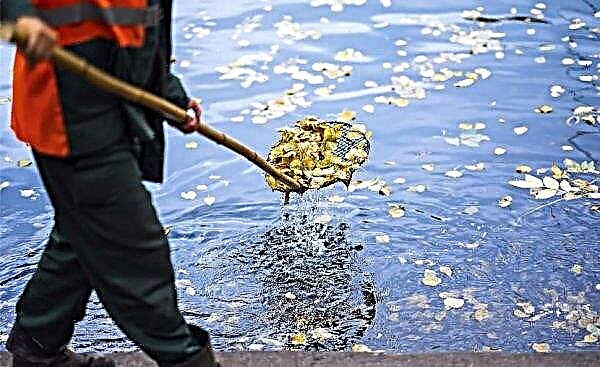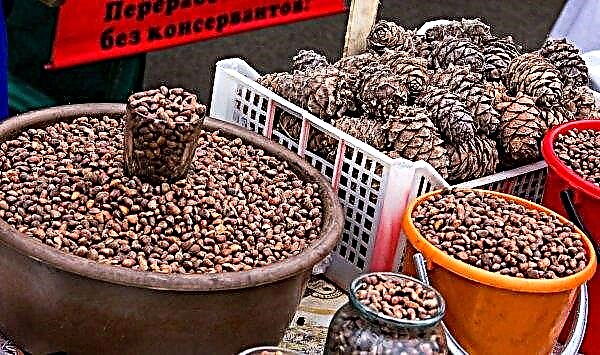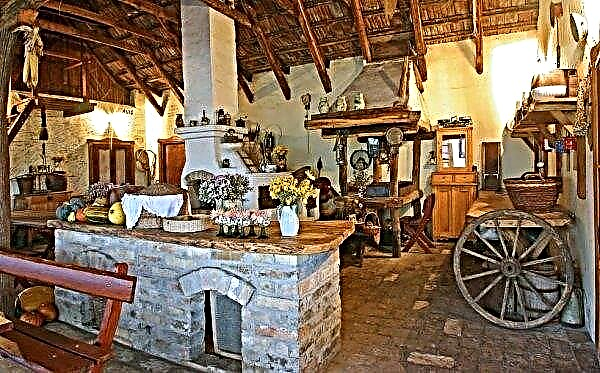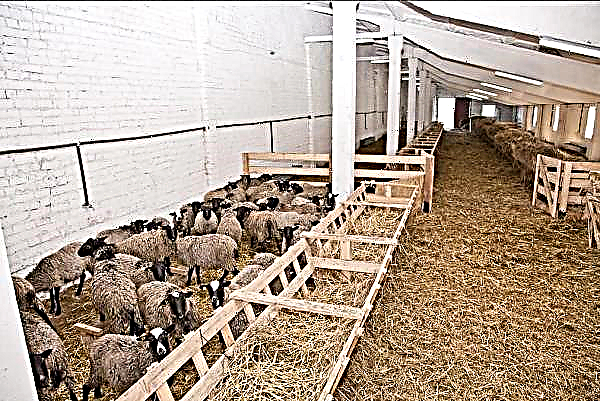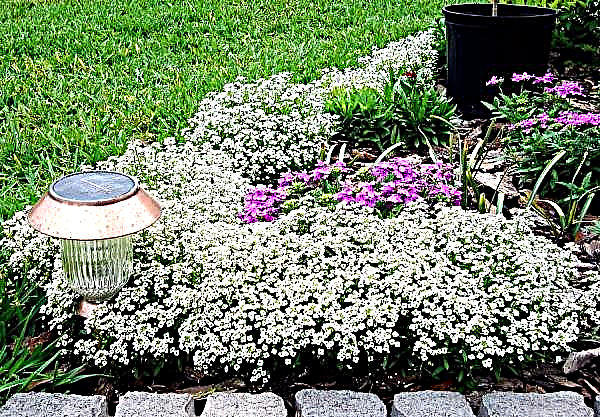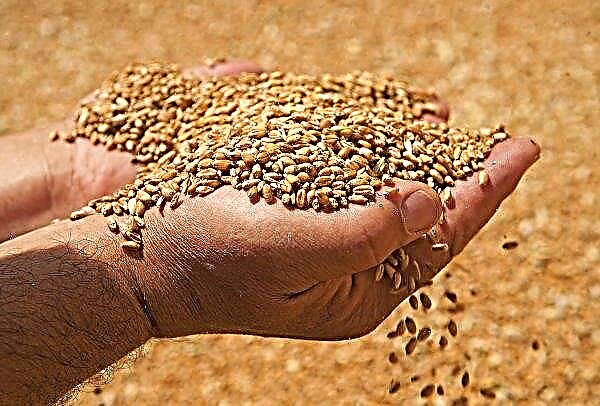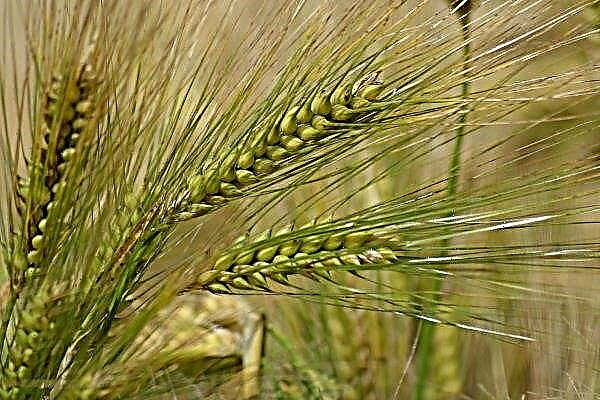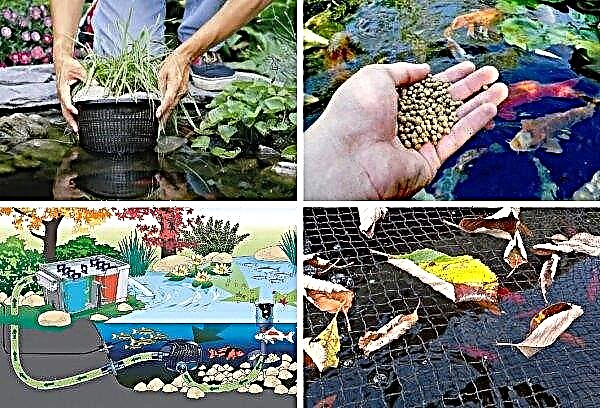Juniper is a beautiful evergreen plant that is actively used to decorate country, home gardens, and garden plots. It also attracts the attention of breeders who have bred many interesting varieties of this culture. The description and cultivation features of one of them under the beautiful name Blue Star can be found in the article.
Botanical Description
Juniperus squamata Blue Star, a flake juniper variety, is particularly popular. It is explained by the beautiful bluish or blue color of the needles and compact dimensions. This juniper grows slowly - by the age of 10, its trunk can reach a height of 40 cm, the diameter of the crown is 50 cm.
The crown shape of young trees resembles a ball. In mature plants, it becomes hemispherical. The branches are short, dense. The needles are needle-shaped, protruding. In the course of bearing fruit cones form. They are small in size, have the shape of a ball. Painted in dark blue. The shrub tolerates low temperatures well, is not picky about maintenance.
Video: Juniper Blue Star
Growing regions
In vivo, Blue Star Juniper grows in northern China, the Korean Peninsula, Mongolia, and northern Japan. It can be cultivated in Ukraine, in many regions of Russia, Belarus. Shrub well tolerates the conditions of the city.
Young plants require mandatory shelter for the winter. It is advisable to choose areas for which heavy snowfalls are not characteristic in the winter, as they provoke deformation of the crown. It is also important not to plant in regions where there is a frequent accumulation of melt water.
Did you know? Since ancient times, people believed that juniper bushes have magical properties. They grabbed their shoots on a long journey as amulets, so that it went smoothly and without trouble.
Landing
For the successful cultivation of juniper, you need to choose a quality planting material and choose a suitable site. You also need to prepare the soil and observe the planting technology. It is important not to damage the roots and properly position the root neck. If the conditions recommended for planting are not met, the shrub will begin to grow and develop poorly, and perhaps not even be accepted at all.

Seedling preparation
It is better to choose a sapling in the container. Such plants better adapt to open ground conditions and quickly grow. They need to be planted by transshipment - juniper does not tolerate root damage. Landing can be done at any time of the year, except winter.
Did you know? It is proved that juniper aroma is able to have a healing effect on the human body. Native American tribes of North America placed tuberculosis-infected skin, bones, and joints in the thickets of this plant so that they could be cured.
When choosing planting material, preference should be given to one that meets the following characteristics:
- with crown of uniform color;
- with bark without cracks;
- Freshly growing sprouts;
- 3-4 years old.

If you purchased a seedling with an open root system, then you need to plant it in the spring. So the plant will have more time to adapt before the winter period. Its roots need to be well examined, if necessary, trimmed. It is advisable to withstand in any root-forming machine before planting.
Site selection and preparation
The juniper area requires a well-lit area. Only after receiving enough light will the shrub fully reveal its decorative effect. Penumbra landing is also allowed.
The place where juniper will be grown should be well cleaned of plant debris and dig on a bayonet shovel. The composition of the soil, this culture is not too picky. For her, only an indicator of acidity is important. It should be no higher than 7 pH. If the soil is too acidic, the pH can be lowered by adding slaked lime or dolomite flour.
Juniper is poorly developed and grows on too heavy and poorly drained, dense, saline soils. A planting hole must be dug up a few weeks before placing the seedling in the ground. Its size should be 2-3 times larger than the root system.
Important! It is necessary to place the seedling at a distance of 2 m from other plantings, buildings. If juniper is planted in order to create a hedge, then 1 m between the shrubs is retreating.
A layer of drainage should be laid at the bottom to divert excess water from the roots. For this purpose, it is better to use broken brick, coarse sand. To fill the pit, you need to make a nutritious soil mixture of turf land, sand, peat in a ratio of 2: 1: 1.
Landing process
It’s easy to plant juniper. The technology of its planting is no different from other cultures. It is necessary to act as follows:
- Pour the earth in a container a day before planting.
- Remove the seedling from the pot without damaging the earthen lump. If any part of the roots is exposed, treat them with a rooting agent.
- Lay a layer of soil mixture on the drainage, pouring a hill.
- Put in its center an earthen room.
- Fill the hole to the top.
- Trample.
- Dig in a circle, retreating 20–25 cm from the trunk, a shallow furrow.
- Gradually pour 10 liters of water into it.
- Tie up the seedling trunk to the planting stake.
- Lay a layer of mulch from wood chips, bark, peat or pine cones.

Juniper Care
In order for the described culture to please its decorativeness for a long time, grow and develop well, and disease and pests bypassed it, it is important to provide it with regular care. She does not require much attention to herself.
The main thing is to ensure that the soil is not in a dry state for a long time, periodically apply top dressing, loosen, weed and mulch the trunk circle. An important event is also pruning. In order for the plant to endure winter safely, it is necessary to properly prepare it.
Watering
Frequent watering is required only for a young, not yet rooted bush, which has a poorly developed root system. When the roots develop well, they will be able to independently extract moisture and nutrients from the soil. Often, human participation in plant life is reduced only to moisture during prolonged dry periods.
 After planting, the seedling should be watered at least once a week. 5-10 liters of water should be poured under one plant. It is important to ensure that the land not only does not dry out, but is not flooded.
After planting, the seedling should be watered at least once a week. 5-10 liters of water should be poured under one plant. It is important to ensure that the land not only does not dry out, but is not flooded.
In summer, sprinkling is good for junipers of any age. This is such a method of watering the crown around the perimeter of the hose with a diffused stream. This procedure causes the needles to become denser. In addition, all dirt and dust are washed off the crown, and the needles become brighter. Sprinkling should be carried out more often for a bush that grows in a city.
Top dressing
When the plant sprouts in the earth for 2-3 years, it is worth thinking about feeding it. For juniper, complex mineral mixtures, for example, Kemira Universal, are well suited. In addition, you can apply special fertilizers for conifers, for example, "Uniflora", Agricole. The recommended frequency of top dressing is not more than once a year. 
You should not feed juniper with organic fertilizers, especially manure, as well as nitrogen-containing complexes. This will not benefit the bush, but can only harm it, lead to developmental disabilities.
Loosening and mulching
Each time watering the shrub, or after it rains, the soil on the site must be loosened to avoid the formation of a hard crust on the surface, which makes it difficult for moisture and air to reach the roots. Loosen the earth carefully and not too deep so as not to damage the root system.
Since weeds growing in neglected areas become carriers of pathogens and harmful insects, it is important to keep the trunk area clean by regular weeding. Weeds must be removed with the root, otherwise pretty soon they will grow back.
Mulching will reduce the time spent on caring for juniper. Mulch, laid in a dense layer on the site, retains moisture in the soil, inhibits the growth of weeds, improves the condition of the soil. As a result, you will have to less often water the plantings, loosen and weed the ground in the near-stem circle.
Pruning
Juniper Blue Star does not need crown formation. It independently forms a beautiful shape. It is enough to cut branches only in spring and autumn for sanitary purposes. To do this, remove all diseased, yellowed, bent, shoots growing inside the crown.
Trimming should only be done with a pre-sanitized tool. Slices should be treated with copper sulphate and coated with garden varieties or RanNet paste.
Winter preparations
Before the plant reaches the age of 4–5 years, its aboveground and underground parts must be insulated. The crown is wrapped in burlap, non-woven material. The roots are covered with a high layer of mulch.
Important! Shelter is done immediately after the onset of the first frost. Doing this before is not worth it - you need to gradually accustom the plant to frosty temperatures. Mature specimens do not need shelter anymore.
Junipers, like other conifers, are not so afraid of frosts as the first spring sunshine. They cause burns, which significantly damage the decorative appearance of the bush. In February, plants of any age should be wrapped with material that does not allow sunlight. Such a shelter is removed in April, when the burns are no longer terrible.
Possible diseases and pests
Unfortunately, growing juniper does not always go smoothly. As a result of waterlogging of the soil after spring floods and a rise in the level of groundwater, its decorative effect can significantly suffer, because the needles turn yellow, dry, and fall off.
Important! Since pathogens are able to develop resistance to the active substances of chemicals that are used for the prevention and treatment, it is worth alternating them. Otherwise, therapeutic methods will be ineffective.
Temperature jumps in spring, freezing frosts, bright sunrays lead to damage to the bark, needles, and root system. But fungal diseases are especially dangerous for conifers.

For what symptoms can a plant be diagnosed and how to cure it, see the table:
| Disease name | Symptoms of infection | Treatment methods |
| Alternariosis |
|
|
| Biorell cancer |
| The same methods as with alternariosis. |
| Nectriosis |
| Treatment, as with alternariosis. |
| Rust |
|
|
| Fusarium |
|
|
| Schütte ordinary |
| The use of Bordeaux fluid, drugs "HOM", "Ridomil Gold MC", etc. |
| Schütte brown |
| Treatment with drugs "Quadris", "Ridomil Gold MC", "Strobi" and others. |

Each of the described diseases is very difficult to treat. Often the treatment is unsuccessful, therefore it is better not to allow pathogens by conducting such preventive measures:
- Every autumn thoroughly clean the area of plant debris.
- Make a deep digging of the near-barrel zone on the bayonet of a shovel.
- Choose a healthy seedling for planting.
- Perform regular pruning.
- Inspect plants regularly.
- Strengthen immunity by mineral nutrition.
- Timely care for the soil - water, loosen, weed, mulch.
- To provide shelter for the winter.

In addition to diseases, many harmful insects pose a danger to juniper. Among them are:
| Pest name | Symptoms of lesion | Disposal methods |
| Gallitsa |
|
|
| Flattening mite | decolorization of needles | Three times the use of acaricides, for example, Actellica, Caesar. |
| Sawfly | damaged needles and shoots |
|
| Aphid |
|
|
| Shield |
|
|
| Winged pine moth | needles damage | Treatment in spring and summer with intestinal-contact or systemic insecticides. |
| Mealybug |
| The use of the drug "Enzhio." |

Breeding methods
Juniper can be propagated in two ways: seed and vegetative. From the seeds, conifers are not grown at home. This is a painstaking, troublesome and lengthy process. Most often, the propagation of this culture is carried out using cuttings and layering.
Cuttings
It is better to harvest and root cuttings in the spring, in April - May, after a sanitary haircut. Although you can do this at other times. For breeding, planting material is prepared from semi-lignified branches, leaving a small part of the mother plant. Side shoots are removed from its lower part to a height of 3-4 cm. The slice is placed in a rooting agent.
 It is important to organize timely watering after drying of the topsoil. An already matured plant can be planted in a permanent place no earlier than after 3 months. It is better to generally leave them to grow at home until next spring.
It is important to organize timely watering after drying of the topsoil. An already matured plant can be planted in a permanent place no earlier than after 3 months. It is better to generally leave them to grow at home until next spring.
Then, for rooting, they are planted in an equal mixture of sand and peat in the soil mixture. To speed up the process of emergence of roots, you should place the cuttings in a mini-greenhouse or greenhouse. With good lighting and warm temperature, the root system will form after 1–1.5 months. After that, the shelter can be removed.
Layering
To propagate juniper in this way, in spring, among the branches located in the lower tier, you need to choose the strongest, 3-5 years old, bend it to the ground and make notches at intervals of 10-15 cm. Next, under it you need to dig a trench, pour peat with sand and nip the shoot, fixing it with brackets. After a while, notched roots form. Care for layering is regular watering.
By autumn, several young shoots should break out from under the ground. The following spring, they can be carefully disconnected from the mother plant and planted at a constant place of growth or, if required, for growing.
Video: Juniper propagation by layering
Use in landscape design
Landscape Design Juniper Squamate Blue Star is recommended for cultivation in rocky gardens, alpine slides, rock compositions. Thanks to its compact size, it can be placed in small cottage, garden, and garden plots.
A low creeping shrub with an unusual color of needles looks good both in single and in group planting. It goes well with other conifers and herbaceous plants, especially with creeping, horizontal, rocky.
Thus, the flaky juniper Blue Star is an unpretentious ornamental plant used to decorate various adjoining plots, city parks. In order for the conifer to delight with beauty for many years, one should adhere to the recommendations on site selection, planting and care technology.

